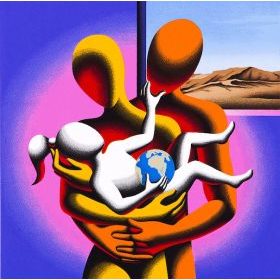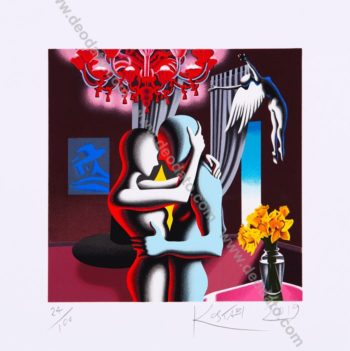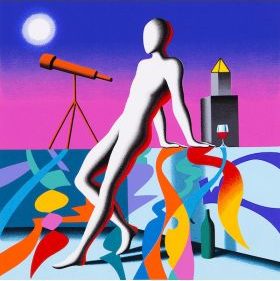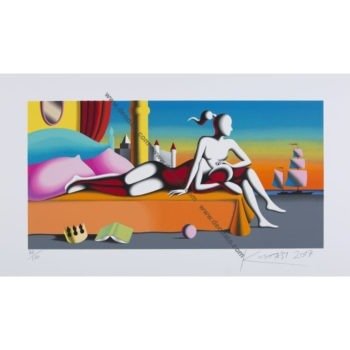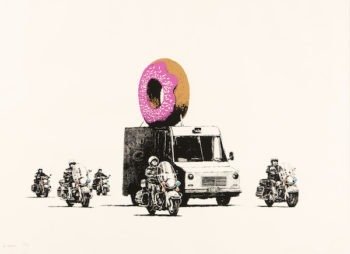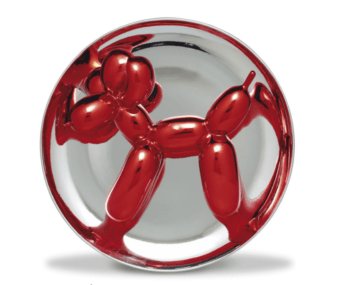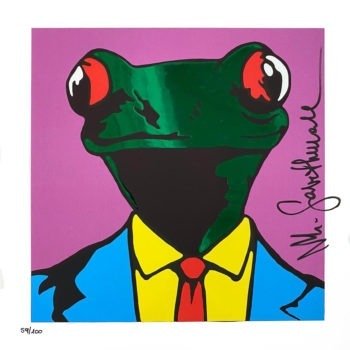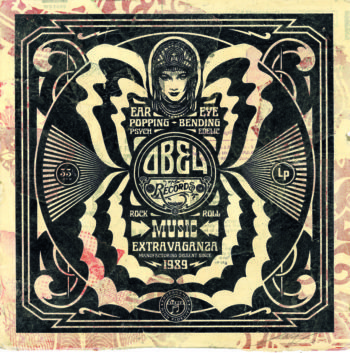Silkscreen on paper, signed and numbered in original by the artist. Limited edition in 100 works in all the world. 35×35 cm
Mark Kostabi was born from a family of Estonian immigrants in California. In 1982 he moved to New York where he became an important point of reference within the artistic movement of the East Village. In these years Kostabi begins his climb to success, in which he imposes himself as a provocative and controversial figure by publishing self-interviews about the theme of commodification of contemporary art.
From the mid-90s he divides his life between New York and Rome, where he becomes a model for many Italian artists. The Italian tradition of the great Masters’ workshop art with Andy Warhol’s American philosophy lay the foundations for the birth of the neo-Renaissance studio called Kostabi World in New York.
In his paintings there are some constants, such as the reference to metaphysics: works on canvas, watercolors and sculptures by the American artist often feature faceless and timeless figures that recall Giorgio De Chirico and his mannequins. These characters express the fear of the man in the society but also a universal language
Kostabi’s art has been also appreciated by the critics: personal exhibitions have been set up all over the world and his works are in the permanent collections of important museums such as the MoMa in New York or the Groningen museum in the Netherlands. In Italy we can admire the sculpture To See Through is Not to See Into in the city of San Benedetto del Tronto and its fresco painted in 1988 inside the Palazzo dei Priori in Arezzo.

